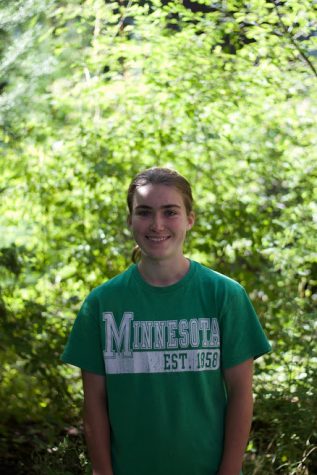COVID-19 Vaccine On Track to Appear…But Not This Year
The length of the process means school will have to change
Life is beginning to feel more normal as Montana gradually reopens, but many differences remain as businesses and schools adjust their operations to ensure safety. School campuses remain closed, stores and gyms are enforcing social distancing, and many places have yet to open. These changes will not completely disappear until an effective vaccine is developed which can prevent cases from resurging anytime restrictions are eased.
Coronavirus spreads because the spiky proteins on the surface of the virus allow it to bind to human cells. An effective vaccine would destroy that protein and prevent the virus from reproducing. Because a vaccine is the only absolute way to prevent infections, scientists around the world are devoting their time and energy to developing one. According to the World Health Organization, there are currently more than 100 efforts underway to produce a vaccine.
Scientists have had mixed success with viral vaccines in the past. Influenza, smallpox, measles, and hepatitis are well-known viruses which have been contained because of effective vaccines. Yet other viruses, such as HIV, have eluded scientists, who remain unsuccessful even after decades of research.
Unfortunately, we haven’t had much success with viruses related to COVID-19 either. A vaccine was never developed for either SARS or MERS, which are very similar to COVID-19. However, this is partly because both outbreaks were contained, making testing more difficult and the need for a vaccine less urgent.
This time around, scientists are able to use past research on SARS and other viruses to speed up development. At the forefront of the race for a vaccine are Oxford University, the Chinese company CanSino, and Moderna, a biotech company based in Massachusetts. There have been some promising early results. In Oxford’s study of macaque monkeys, their vaccine did not prevent infection, but it weakened the effects of the virus. Moderna has begun testing on humans, and in mid-May they reported that the vaccine produced antibodies in all 45 trial participants. CanSino’s first trials of a vaccine were successful as well, with 108 adults showing an immune response.
Although there has been some success in the early stages of development, the creation of reliable and safe vaccines is a slow process. They require multiple research trials and need to be tested on thousands of people before they are administered. Once a vaccine is proven to be both safe and successful, additional time is needed for production and distribution. And it’s usually harder to create vaccines that work effectively on older people – the demographic most vulnerable to COVID-19.
Dr. Scott Gottlieb, the former commissioner of the Food and Drug Administration, doesn’t believe a vaccine will be ready this year. “I really think a vaccine is probably a 2021 event, in terms of having wide availability of a vaccine for the general population,” he told CNBC. Most experts predict that a vaccine will take at least 12-18 months to develop and test on humans.
Without a vaccine, society will have to continue adjusting to the effects of the virus. School will look very different than in years past. “The virus has completely changed what both my junior and senior year of high school will look like,” said Aidan Serviss, a junior at Hellgate.
As it will no longer be possible to fill classrooms, halls, and cafeterias with large numbers of students, educators around the country are considering different ways to structure the school day. One option is to shorten the school week. Students could attend two or three days and have online instruction all other days. Another possible option is having students attend either morning or afternoon classes and then stay home the rest of the day. Some schools are also considering splitting the student population in half in order to stagger attendence.
The Centers for Disease Control has recommended that schools close communal spaces, frequently clean surfaces, and modify classroom layouts. In Denmark, which reopened schools for lower grades, classrooms were limited to ten people and desks were spaced six feet apart.
Montana has been able to keep cases low, so it’s possible there will be more flexibility. But no matter how widespread the virus is at that point, it’s likely that online learning will continue to be incorporated to some degree.
Many school-related activities, such as music concerts and sporting events, will be different as well. “The virus has proven to be a bit of a game changer,” said Isabel Emmert-Nolte, an IB diploma student who is heavily involved in several extracurriculars. “Many of the events that I had planned on attending have been either cancelled or rescheduled, and I find that planning for anything has been difficult.”
Emmert-Nolte has found ways to work around the difficulties, though, by continuing music lessons through Zoom and doing her best with schoolwork. “I think that it is safe to assume that expectations will and have been made for us so that the transition back into normal life can be as smooth as possible,” she said.
Although the changes caused by the pandemic are difficult and stressful for many people, they’re necessary for our well-being and safety. “The quote I most often hear said about the pandemic is ‘we should look back and think we overreacted.’ I think this quote speaks volumes about how change in society can be made,” said Serviss. “It’s easier to fix something before it becomes a problem and the further that problem progresses the harder it is to solve it.”
Thankfully, scientists around the world are pouring their efforts into developing a vaccine and schools around the country are thinking ahead to the changes that will need to be made in the fall. These efforts will help us deal with COVID-19 before it escalates into a larger and less manageable problem.

Hello! I'm a Senior at Hellgate and this is my second year writing for the Lance. In addition to writing, I enjoy mountain biking, playing cello, and competing...



